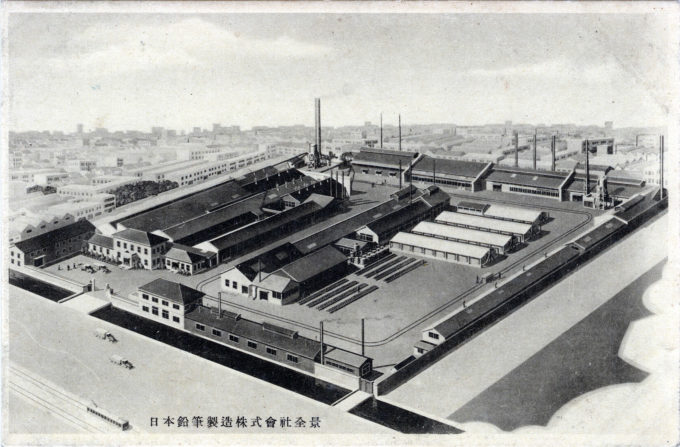
Nippon Pencil Manufacturing Co., Tokyo, c. 1930, was founded in August 1919 by several Tokyo businessmen who consolidated the operations of their smaller pencil factories into one large manufacturing operation, with each factory owner becoming a director of the new company.
See also:
Pilot Fountain Pen and Pilot Ink advertising postcard, c. 1930.
Sapporo Brewery and Factory, Sapporo, Hokkaido, c. 1910.
Kikkoman brand Soy Sauce (history), c. 1930.
Japanese started using pencils in the late 19th century as the country began making modernization reforms during the Meiji era (1868-1912). The adoption of pencils, a new technology for a culture which had traditionally used brushes, bamboo and reed pens for writing, was influenced by several factors:
Western Influence: During the Meiji era, Japan underwent a period of modernization and Westernization. The government actively encouraged the adoption of Western technologies and practices. Pencils, with their graphite cores encased in wood, were a Western invention that was seen as more convenient and practical than traditional Japanese writing implements like brushes and ink. Practicality: Pencils offered several advantages over traditional writing tools. They were more portable, didn’t require ink or water, and allowed for cleaner and more precise writing and drawing. This made them appealing for various applications, including education and business. Education Reforms: The Meiji government implemented significant education reforms during this period, aiming to provide education to a wider population. Pencils were well-suited for use in schools because they were easy to use and didn’t require the preparation and maintenance associated with traditional calligraphy tools. Industrialization: As Japan underwent industrialization, there was a growing need for tools that could support administrative and business activities. Pencils fit well into this emerging industrial and bureaucratic landscape.
As a result of these factors, pencils gained greatly in popularity and have remained a common writing and drawing tool in the country ever since.

